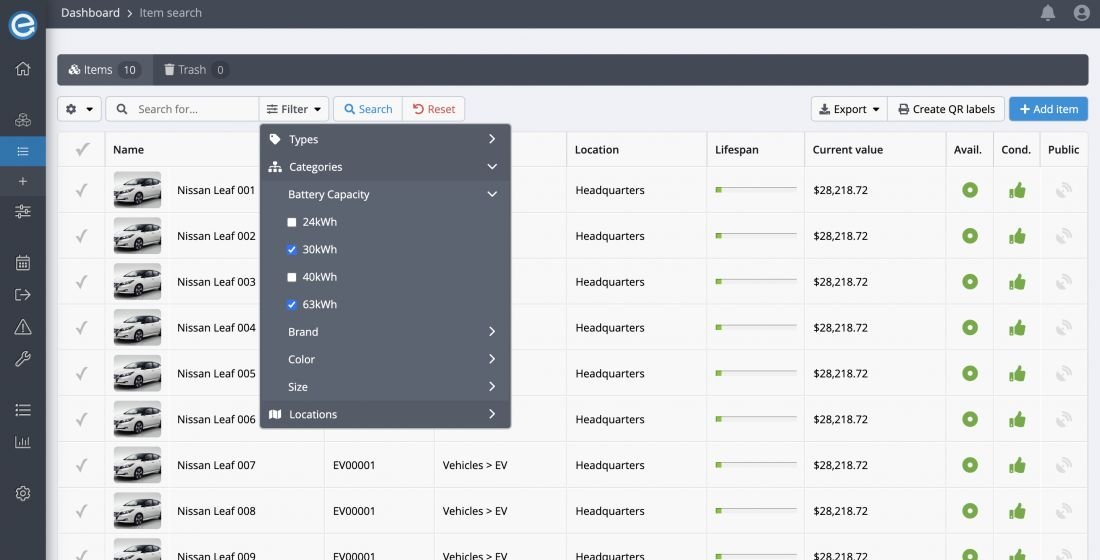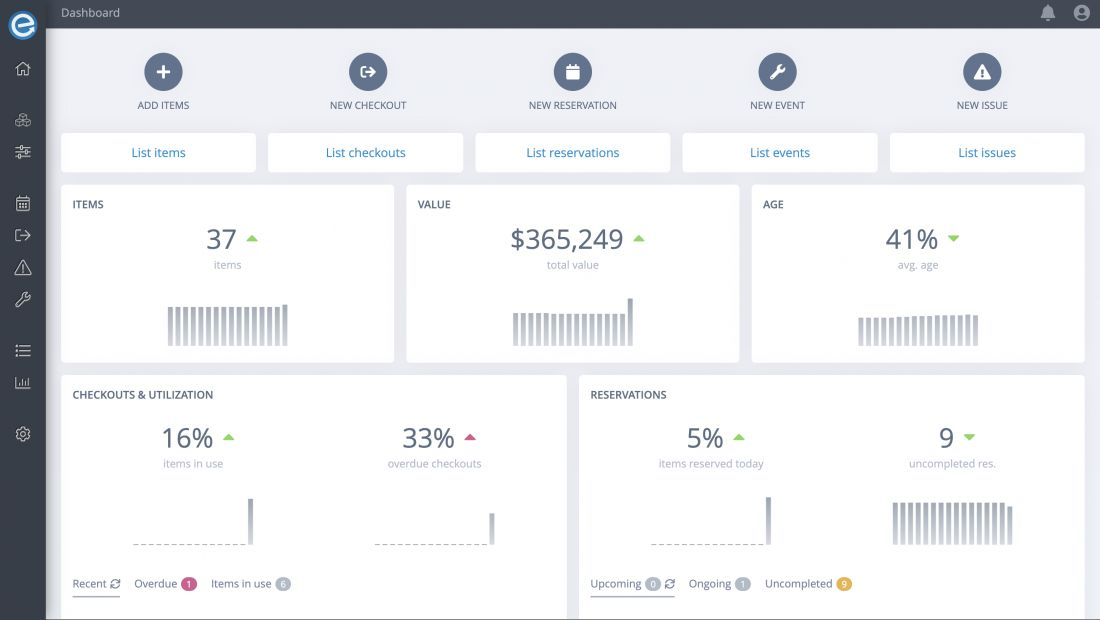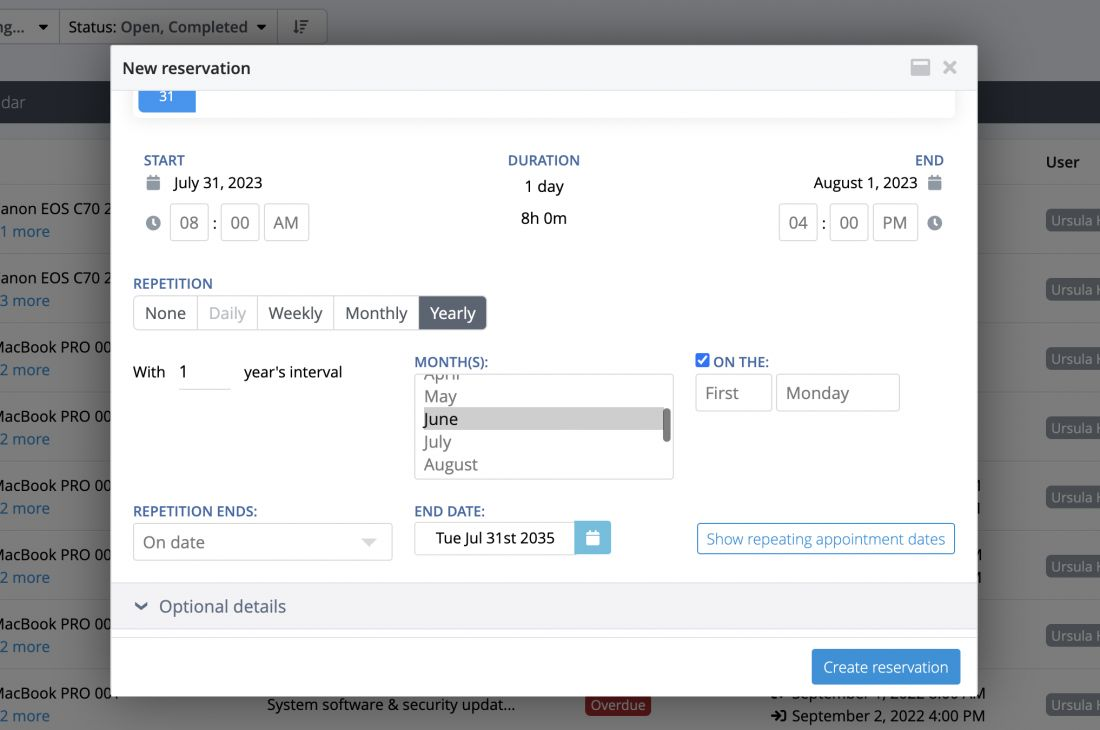Optimizing Business Operations with Fixed Asset Management Software
In this article, we will explore the features and benefits of comprehensive fixed asset management software and delve into valuable tips and tricks for its successful implementation.
In the fast-paced world of business, managing fixed assets efficiently is crucial for maintaining seamless operations and maximizing return on investment. Manual asset management processes can be time-consuming, error-prone, and lack real-time insights.
To overcome these challenges, organizations are turning to fixed asset management software, a powerful solution that empowers businesses to track, maintain, and optimize their valuable assets effectively.
What is Fixed Asset Management Software?
Fixed asset management software is a robust tool designed to streamline the process of tracking, maintaining, and managing an organization's physical assets and equipment. From computers and machinery to vehicles and video production equipment, fixed asset management software provides a centralized database that offers real-time insights into asset health, location, and maintenance status.
With the ability to digitize asset records using barcodes, QR codes, or RFID, this software enables organizations to achieve greater efficiency and productivity in their asset management workflows.
The Importance of a Comprehensive Equipment and Asset Database
One of the primary advantages of fixed asset management software is the creation of a comprehensive database of items. It centralizes all asset-related information, allowing users to access real-time data, update asset records, and track asset movements effortlessly.
A comprehensive database provides a complete view of the organization's fixed asset portfolio, enabling effective decision-making and strategic planning.
Detailed Search and Filtering Based on Custom Criteria
A key feature of modern fixed asset management software is the ability to perform detailed searches and filtering based on custom criteria. This functionality simplifies asset tracking and retrieval, making it easy to find specific assets quickly.

Whether searching for a particular asset type, location, maintenance history, or even asset custodian, custom criteria filtering ensures relevant and targeted results.
Itefy offers a vast amount of search options and fully customizable filters that makes it easy to find certain items within seconds, even in a database with thousands of fixed assets.
Real-time Status Updates
With fixed asset management software, organizations gain real-time visibility into the status of their assets.

Users can track asset performance, maintenance schedules, and location changes as they occur. Real-time updates enable swift actions and responses, reducing downtime and enhancing overall asset efficiency.
The Benefits of Fixed Asset Management Software
Improved Asset Utilization
Comprehensive fixed asset management software helps optimize asset utilization by ensuring that assets are deployed efficiently and effectively. By analyzing asset usage patterns and maintenance needs, businesses can make informed decisions about redistributing assets or retiring underutilized ones.
For example, if certain assets are frequently idle or underused, they can be reallocated to other departments or locations where they are needed more, thereby maximizing their utility.
Enhanced Compliance and Safety
Maintaining compliance with legal and regulatory standards is essential for every organization. Fixed asset management software facilitates regular audits, ensuring that assets adhere to safety and environmental guidelines.
Compliance monitoring helps avoid costly penalties and reputational damage. Additionally, the software can track safety certifications and inspection dates for assets, ensuring they are always up to date and safe for use.
Predictive Maintenance and Reduced Downtime
Modern fixed asset management software integrates IoT and AI capabilities, enabling predictive maintenance. By analyzing sensor data and historical performance, the software can predict potential asset failures and recommend preventive measures.

This proactive approach minimizes unexpected downtime and reduces maintenance costs.
For instance, the software can analyze equipment data to predict when maintenance is required, allowing organizations to schedule maintenance activities in advance, preventing breakdowns and minimizing disruptions to operations.
Simplified Asset Tracking and Auditing
Gone are the days of manual asset tracking and labor-intensive audits. Fixed asset management software automates asset tracking, allowing organizations to locate and monitor assets accurately. Auditing becomes a breeze, with digital records ensuring greater accuracy and efficiency.
The software can also generate detailed audit trails, making it easier to trace the history of asset transactions and changes, which can be invaluable for compliance and financial reporting purposes.
Increased Return on Investment (ROI)
With streamlined asset management processes, organizations can prolong the useful life of assets and reduce the need for premature replacements. This optimization of assets leads to increased return on investment, as businesses get the most value from their capital investments.
Additionally, by identifying and addressing maintenance issues promptly, the software can help extend the lifespan of assets, ultimately saving costs associated with frequent replacements.
Tips and Tricks for Successful Fixed Asset Management Software Implementation
Conduct a Thorough Asset Inventory
Before implementing the software, conduct a comprehensive inventory of all fixed assets. Create a detailed list that includes asset descriptions, serial numbers, purchase dates, and initial costs. This inventory will serve as the foundation for setting up the software and ensuring accurate data entry.
It is essential to validate the accuracy of existing asset records and resolve any discrepancies during this stage.
Establish Customizable Asset Categories
Customizable asset categories help organize assets based on specific criteria, such as department, location, or asset type. These categories simplify search and filtering, making it easier to manage assets efficiently.
For example, assets can be categorized based on their maintenance requirements, enabling targeted maintenance planning and scheduling.
Implement Regular Asset Audits
Even with fixed asset management software in place, regular asset audits are essential to ensure data accuracy and compliance. Schedule periodic audits to verify asset information, detect discrepancies, and update records as needed.
Audits should involve physically verifying the existence and condition of assets, reconciling physical counts with digital records, and conducting spot checks for data accuracy.
Set Up Maintenance Schedules and Alerts
Utilize the software's maintenance scheduling feature to create regular maintenance routines for assets. Based on asset type, usage patterns, and manufacturer recommendations, establish customized maintenance schedules.
Set up automated alerts to notify maintenance teams when tasks are due, ensuring timely asset upkeep and preventing unexpected breakdowns. The software can send email notifications or push alerts to designated personnel, keeping them informed about maintenance requirements.
Leverage Mobile Capabilities
Choose a fixed asset management software that offers mobile capabilities. This empowers field technicians to access asset information, update records, and perform maintenance tasks on the go, increasing efficiency and responsiveness.
Mobile capabilities enable technicians to scan asset barcodes or QR codes using smartphones or tablets, ensuring accurate and real-time data entry.

Additionally, they can capture photos of assets, documenting their condition and any issues that require attention.
Integrate with Other Business Systems
For seamless asset management across departments, consider integrating the fixed asset management software with other business systems, such as ERP or CMMS. This integration streamlines data sharing and improves collaboration among different teams.
For instance, linking fixed asset data with procurement and inventory management systems can provide insights into asset costs, usage, and availability, optimizing resource allocation.
Conduct Training and Provide Ongoing Support
Ensure that employees who will be using the fixed asset management software receive proper training on its functionalities and best practices. Training should cover data entry, search and filtering, maintenance scheduling, and report generation.
Provide ongoing support and assistance to address any questions or issues that may arise during daily asset management operations. Regular refresher training sessions can also be beneficial to ensure that users are leveraging the software to its full potential.
Monitor Key Performance Indicators (KPIs)
Identify and track key performance indicators related to asset management, such as asset utilization rate, maintenance cost per asset, asset downtime, and compliance adherence. Monitoring KPIs allows organizations to measure the effectiveness of their asset management strategies and identify areas for improvement.
Regularly review KPI data and use it to inform decision-making and optimization efforts.
Conduct Regular Data Cleansing
To maintain data accuracy and system performance, conduct regular data cleansing activities. This involves identifying and correcting duplicate or outdated asset records, updating asset information as changes occur, and ensuring data integrity. Data cleansing helps prevent data clutter and ensures that asset information remains reliable and up to date.
Summary
Fixed asset management software is a game-changer for businesses seeking to optimize their asset management processes and achieve maximum efficiency. By centralizing asset information, offering detailed search and filtering capabilities, and providing real-time status updates, this software empowers organizations to make informed decisions, reduce downtime, and enhance asset utilization.
Implementing the tips and tricks mentioned in this article ensures successful adoption and harnesses the full potential of comprehensive fixed asset management software, leading to improved ROI and overall operational excellence. Embrace the power of technology and take control of your assets to drive success in today's competitive business landscape. With a robust fixed asset management solution, businesses can unlock greater productivity, cost savings, and a competitive advantage in the market.
